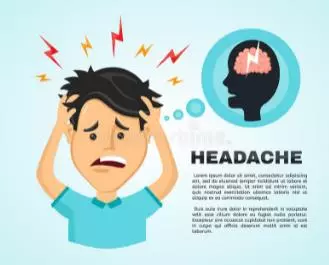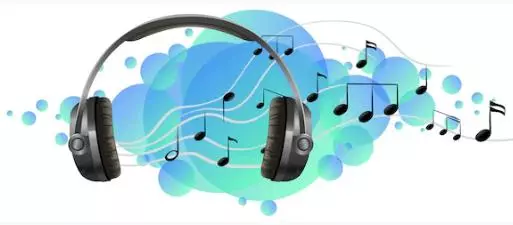Did you know your headphones could be giving you headaches? There’s a lot of talk about this at the moment and it seems obvious that they can! While wireless headphones have many benefits, they do have some potential drawbacks.
This article will find out how Bluetooth transmitters and receivers can cause these problems and what to do about them.
Can Bluetooth Headphones Cause Headaches?
Bluetooth headphones can cause headaches if used for a long time at a high volume. Also, headaches from Bluetooth headphones originate from EMF exposure from the Bluetooth transmitter. These are the same headaches that people get when they are near cell phone towers, cell phones, smart meters, and other radio wave transmitters.
Furthermore, they can also result from pulsed digital signals, which cause pressure in the brain. This is a microwave headache. The bone conduction of sound can also cause them into your skull and ear canal. All of these can cause headaches.
Why do Headphones cause Headaches?
High Sound
The sound volume is also an essential factor. Too much pressure on your ear can lead to fatigue. So, it is important to avoid playing music at a high volume level for long periods. The higher the volume level, the greater the risk for damage.

If you have trouble hearing your music because you are listening to it through a pair of headphones
it’s best to use them with an audio interface so you can adjust the volume easily.
This way, you will not get fatigued from listening at a high volume level.
Tight Bands
The most common cause of tension headaches is a tight band-like feeling around your forehead.
This is due to the contraction of your scalp and neck muscles. Headphones can cause headaches because they can compress the nerves at the back of your head.
The ears are susceptible organs because they have many nerve endings. Using headphones for long periods can trigger a headache by increasing the pressure on blood vessels and compressing nerves in your head and neck, which results in pain.
Earwax Buildup and Infection
If you experience pain when wearing headphones only on one side, you may have an ear infection or wax buildup on that side. Routine cleaning from your doctor should solve the problem.
You might also consider investing in a pair of sound-isolating headphones, which block out external noise and prevent you from turning up the volume to hear above ambient noise. Some brands even come with interchangeable ear tips to help find a pair that fits well without causing pain or discomfort.
Other Discomforts Caused by Headphone Use
Pain: The skin of the ear is susceptible, and pain can occur due to prolonged contact with headphones. This is especially true if wearing earbuds, which sit inside the ear canal.
Some people’s ears are more sensitive than others, so some may experience more pain than others. This can be so when there are beeps on your headset or overly high sounds.
Hair pulling: Those with long hair may find that their hair gets caught up in their headphones or tangled around headphone cords. This can be painful and uncomfortable and may even require haircutting to remove the knot.
Dizziness: Some people experience dizziness when using headphones for long periods, especially if the headphones block some outside sound and interfere with your balance.

Tinnitus: It is a ringing or buzzing in the ears caused by prolonged exposure to loud sounds.
It is a common problem among musicians who play without protection, associated with headphones.
Bumps: Headphones may also cause bumps to form on the ears if placed too tightly on the head. These bumps can be painful, especially when they press against the inner ear while wearing headphones.
Users with sensitive skin are more likely to get bumps on their ears due to excessive headphones.
Tips on How to Prevent Headaches from Headphones Use
1. Give your ears a break
Headphones can be a major source of strain and tension. It is essential to take frequent breaks from headphones used to reduce pain and discomfort.
If your headphones are over-ear or on-ear, try to give your ears at least 15 minutes of break every hour you use them. If you are using earbuds, take a break every 20 to 30 minutes for ear health.
2. Reduce the Volume on Headphones
Ideally, you should listen to music on your headphones at 60% of the maximum volume or less. If you can hear music through your headphones without it getting turned up very much, then this is a sign that your headphones are too loud. Try using a different pair of headphones instead.

Turn down the volume on your headphones when you notice any soreness or irritation from listening to music, podcasts, or audiobooks.
3. Adjust Headphone Fit
Try to adjust your headphones so they fit snugly without pressing too tightly against your head or ears, which can cause pain or irritation over time.
If you still experience discomfort with properly fitting headphones, try using different models until you find one that fits comfortably for long periods.
4. Use Over-ear or on-ear Headphones Rather than Earbuds
Earbud-style headphones rest directly in your ear canal and need to adjust louder to overcome the ambient noise around you.
Over-ear, on-ear, and behind-the-neck headphones are larger and sit outside of your ear canal, so they do not need to be turned up as high. This decreases the risk of noise-induced hearing loss, which is a common cause of headaches.

I am a tech writer and editor with a special focus on trends, ideas, and updates in tech and IT news. I like to blog about tech and gadgets.
